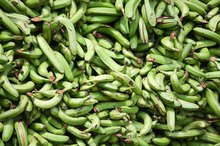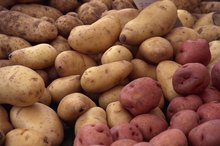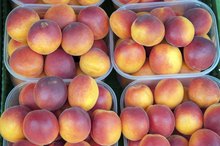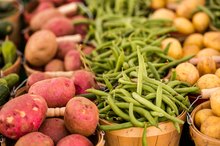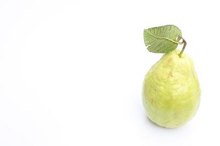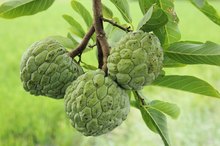Low Glycemic Vegetables and Fruits
Fruits and vegetables are healthy, carbohydrate-rich foods that vastly differ in how they affect your blood sugar levels. Fortunately, the glycemic index is available to help you out. The glycemic index doesn’t differentiate carbohydrates as simple or complex; rather, it distinguishes foods by whether they raise your blood sugar quickly or gradually over a period of time. Choose a variety of colorful fruits and vegetables with a low glycemic index if you're watching your blood sugar levels.
The Glycemic Index
The glycemic index is a tool used to determine the effect a carbohydrate-containing food has on your blood sugar levels. Foods are ranked by number in comparison to white bread or glucose. Foods with a high glycemic index cause your blood sugar to quickly spike whereas foods with a low glycemic index allow for gradual increases in blood sugar levels. Foods on the low end of the spectrum fall between 0 and 55. Foods with a moderate glycemic index are at or between 56 and 69 and foods on the high end of the spectrum are at 70 or above.
Fruits
Do Green Plantains Raise Your Blood Sugar?
Learn More
Fruits are naturally sweet, so they're excellent dessert selections. Cherries, grapefruits, plums, peaches and prunes all have a glycemic index under 30. Apples and dried apricots are at 34 and 32 respectively. Pears, grapes, coconut, kiwi, oranges and strawberries fall under a glycemic index of 55. Fruits with a moderate glycemic index include mango, bananas, papaya, figs and pineapple. Watermelon is not as kind to your blood sugar with a glycemic index of 72 and dates are at 103.
Vegetables
Fill your plate with vegetables that won’t spike your blood sugar by choosing broccoli, cabbage, lettuce, onions and red peppers, which all have a glycemic index of 10. Green beans, tomatoes, cauliflower and eggplant are not far behind with a glycemic index of 15. Raw carrots are 16, but boiled carrots jump to 41 and frozen green peas and sweet corn are at 39 and 47 respectively. Beets have a moderately high glycemic index of 64 and pumpkin, 75, and parsnips, 97, are on the high end.
Considerations
Fruits & Veggies With a High Glycemic Index
Learn More
As a general rule of thumb, the higher in fiber a fruit or vegetable is, the lower the glycemic index, according to the American Diabetes Association. If you let your produce get too ripe or store it for too long, the glycemic index will increase. Likewise, if you overcook your vegetables, you will raise their glycemic index. Processing negatively affects a food’s glycemic index. For example, fruit juice ranks higher than whole fruit and mashed potatoes rank higher than a whole, baked potato.
Related Articles
References
Writer Bio
Michelle Fisk began writing professionally in 2011. She has been published in the "Physician and Sports Medicine Journal." Her expertise lies in the fields of exercise physiology and nutrition. Fisk holds a Master of Science in kinesiology from Marywood University.
